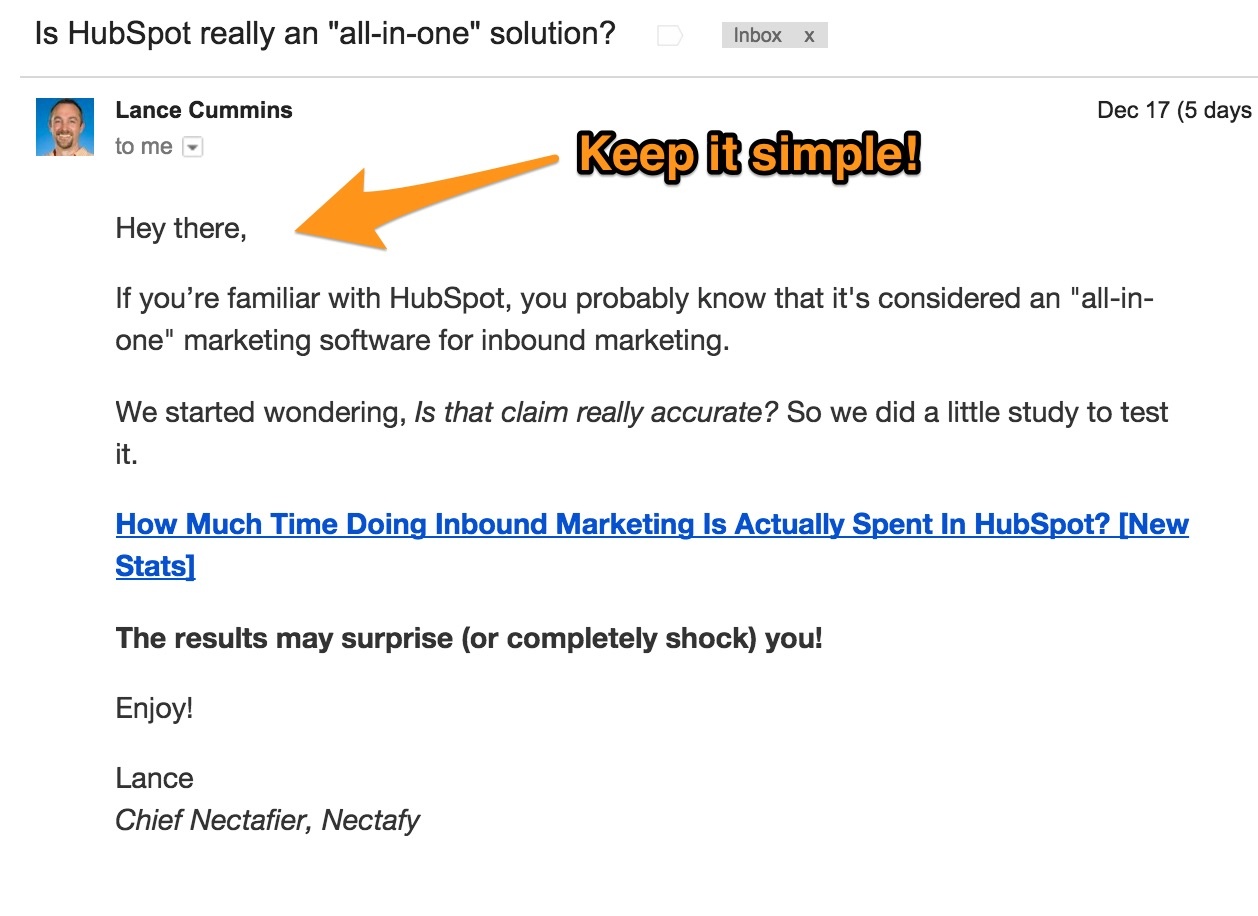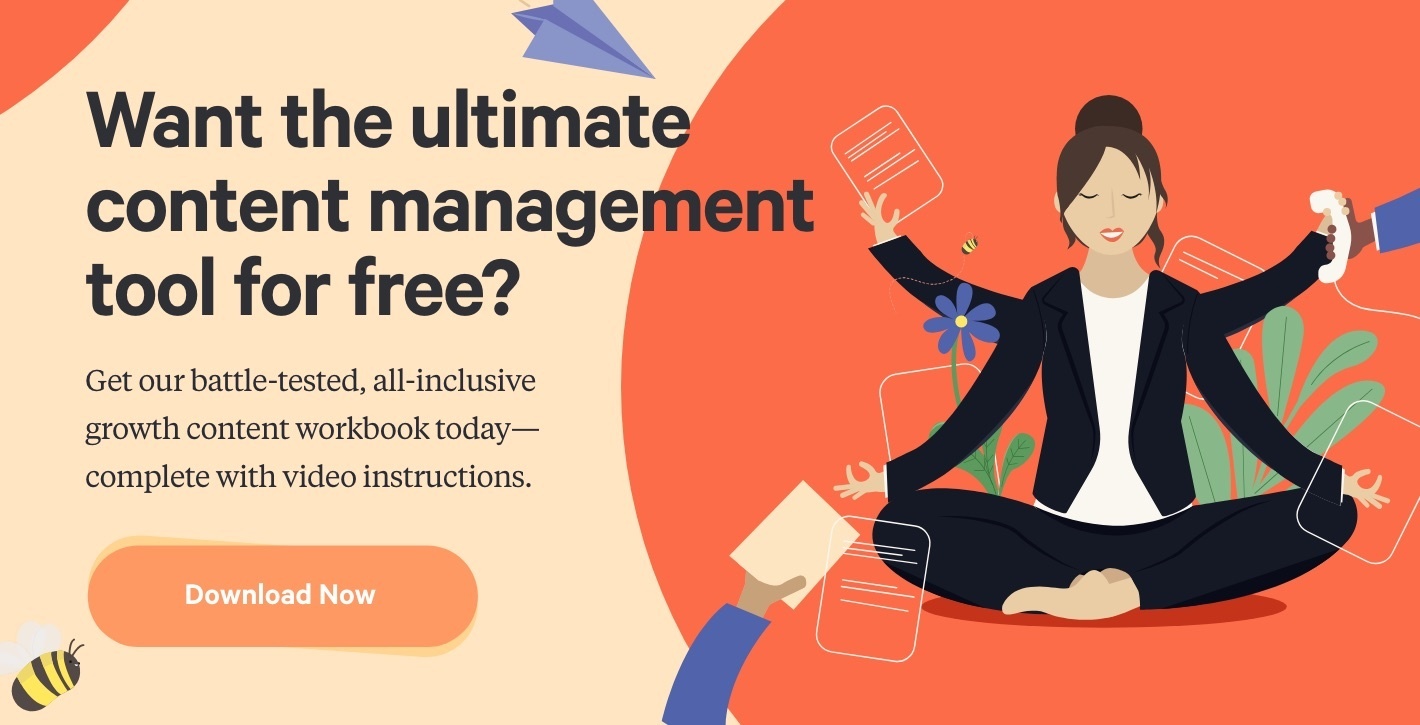9 Best Practices For A Successful (& Personal) Email Nurture Campaign



What makes an email nurture campaign work? You could probably guess that there isn't a single correct answer to this question—the answers vary depending on your industry, your customers, and your products.
But, there is one thing all of these “right answers” have in common: they lead back to treating the person you’re emailing like a real person—even like a friend. Ultimately, that’s what email nurture campaigns (also called email workflows) are all about—treating people like people. Because even though you’re automating the messages you send, you can still make them personal. Here’s how.
1. Send emails from a person and a person’s email address.
The sender and the sender’s email address are elements that are almost as important as things like the subject line, the body of the email, and what you’re asking the reader to do (the call-to-action). We recommend using an actual person’s name as the sender of your emails (not a group name or your company name). The same is true for the email address you’re sending from—sending from someone’s actual email account shows the recipient that they are dealing with a real person and that if they have questions, someone will respond.

2. Send text-based emails.
We recommend sending emails that look like regular, everyday emails—no fancy formatting or images. To us, emails seem more personal (like someone’s actually writing to us rather than scores of people) when they pop up in our inbox on a white screen.

3. Optimize your emails so they scale to mobile phones.
“Mobile email will account for 15 to 70% of email opens, depending on your target audience, product, and email type.” eMailmonday, The Ultimate Mobile Email Stats
If you’re not making your emails easy to read and click through on mobile devices, you could be frustrating the people you’re trying to reach and keeping them from converting.
(Wondering how to optimize for mobile devices? HubSpot offers a handy little preview tool you can use to see exactly how your emails will look on a desktop, tablet, or mobile device. Many other email providers offer this, too.)
4. Give people a way to respond to you.
This is a corollary to our first best practice: Make sure that the email address you’re using is one people can actually reply to if they have a question or comment or just want to say hi. The goal of these emails is to provide helpful resources you think the recipient will actually use, so you need to convey that someone is actually there on the other end—a person who is happy to help.
So, make sure the email address you’re giving people to reply to is one that you check frequently. (Then, reply ASAP when you get an email!)
5. Don’t drag out your email sequence over months.
Schedule your workflow emails (we recommend 3-6 emails per workflow) over approximately three weeks. You should send the bulk of the helpful content you’re providing in the first few emails. Why? You need to strike while the iron’s hot! If someone’s a good lead—one who is seriously researching solutions—they’ll likely be taking action sooner rather than later.
(In an industry with a longer sales cycle? Try offering resources like blog subscriptions or follow-up emails to check back in on where they are in the decision process.)
6. Send your first email shortly after someone fills out a form.
We’ve discovered that the best chance we have to get in touch with a contact is shortly after they fill out a form on our website—and stats confirm it! The few minutes immediately following a lead’s contact with you are when you’re most likely to get a sales call or a response.
The best thing to do is to send a live response shortly after you’re notified with a contact’s form submission (within five minutes). But if you can’t send a real-time interaction yourself, your next best bet is to set up a basic automated follow-up email to either schedule a demo/call or offer to answer any questions.
7. Write your follow-up email subject lines to one person.
Here’s something you might think is counterintuitive (I did the first time I heard it!): Don’t think about open rates when you’re writing a subject line.
Instead of thinking about the many people you’re actually writing to, think about just one. How can you get that one person—based on the knowledge you have about your buyer persona—to click your email and read it?
Try these two things:
- Ask yourself, “Does this subject line sound like something I would actually write to a friend?”
- If possible, keep your subject line between one and three words (as if you were sending a personal email). For example, a subject line like “12 reasons to use X software” wouldn’t be as effective as “Software follow-up.”
8. Be careful when using custom fields.
Don’t misuse or overuse custom “tokens”—the fields you can customize in an email based on data your leads provide about themselves. Henry, our director of marketing, typically recommends not using text-based fields (like company names) when possible.
Why? Take our company name, for example. If you were writing an email to someone on our team and you used a “company name” token, it might refer to our company as “Nectafy, LLC” instead of “Nectafy.” The “LLC” isn’t something we throw around in conversation, so it’d look overly formal, a little weird, and obviously automated.
That isn’t to say all tokens should be avoided—this just serves as a reminder to think through how they will be used and to make sure they work correctly.
9. Make sure subsequent emails relate to a person’s original interest.
Build off the offer—for example, the white paper or the ebook—your lead originally downloaded in every follow-up email you send. To help make that connection more clear in your writing, try language like this:
“I saw that you downloaded this guide; many people who’ve downloaded it are interested in (an offer or next step) next.”
This precise language ensures you’re relating this new, helpful information to the topic you already know they’re interested in. It also helps the recipient move down the buying funnel and shows, once again, that you are a human being and that you want to treat them like a human being.
What would you add to this list of best practices? Let us know your suggestions in the comments!

